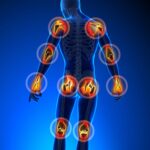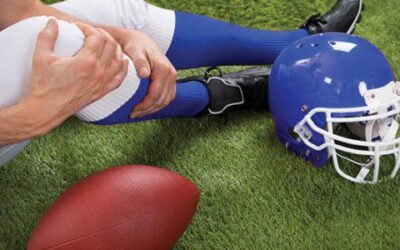You’re starting to suffer from nagging hip pain. It hurts when you stand, walk, and get out of bed in the morning. It’s starting to cause a limp. You’re having trouble getting through your work day or finishing all 18 holes at the golf course. What do you do?
Most people will call their doctor to set up an appointment. Typically the doctor takes X-rays, prescribes pain medication, and may refer you to Physical Therapy.
You get your X-ray results. The doctor tells you, you have arthritis.
You start to think, oh my gosh, it’s all over from here. I’m going to have my hip replaced.
I won’t be able to golf anymore…
There will be no pickleball anymore…
I can’t shag the baseballs for my grandkids anymore…
How long is this going to take?
I have my granddaughter’s wedding to attend and an upcoming charity golf tournament to play in.
I don’t have time for this…
Let’s take a step back and come out of that rabbit hole you just started down.
Let me assure you, there are other options. You may not have to go under the knife.
I’ve seen countless patients that show up to their evaluation telling me they have arthritis.
Some of their doctors told them it’s due to being active when they were younger (WRONG).
Some said that they need a hip replacement (PROBABLY NOT).
A lot will say that it’s wear and tear (EYE ROLL).
Few say that it’s part of the normal aging process and refer you to Physical Therapy (TRUTH).
But first, let’s deep dive into what is really causing your pain…
Arthritis
That is just a fancy way of saying inflammation.
Our joints age over time just like we do. We get gray hair and wrinkles, and so do our joints. It’s normal for our joints to change as we age. We weren’t meant to live forever, but our bodies were made to adapt. And our bodies can and will adapt.
There is a bit of a biological piece to arthritis. Our DNA, RNA, chemicals, proteins, and hormones are actually the most predictive regarding whether the cartilage around the joint is going to thin and become less resilient. It’s a very complex process that we won’t get into, but it’s important to be aware of this information. Especially with how much false information there is on the internet and even given to you by healthcare providers.
Let’s talk about what’s actually causing the pain. Because that’s probably why you’re reading this blog.
Bone and cartilage don’t have nerve endings, therefore they cannot generate pain. That means that bone-on-bone or degeneration of your cartilage wouldn’t cause pain.
This helps explain how your arthritis may not be the cause of your pain.
The presence of arthritis may just be normal aging.
You can have arthritis and not have any of the above things. Meaning you can have arthritis and not have pain!
So what is causing your pain?
- Periosteum: a thin tissue that wraps around the bone
- It supplies blood to the bone and there are nerves in the periosteum. This is what causes pain when you break a bone. This is also what helps heal your bone when it breaks.
- Damage to the periosteum can create pain.
- Synovitis: inflammation in the synovium
- The synovium is tissue that lines the joint capsule.
- It’s like a balloon that surrounds the bone.
- When this lining becomes inflamed (synovitis), it creates a lot of pain.
- The synovium is tissue that lines the joint capsule.
- Edema or inflammation of the bone
- This may be due to osteopenia or osteoporosis.
- In osteopenia or osteoporosis, the bone is weaker. This leads to less cushion, ultimately resulting in bone marrow edema, which creates pain.
- This may be due to osteopenia or osteoporosis.
The severity of arthritis plays a role in determining whether or not to undergo a hip replacement, but it is not the final nail in the coffin.
Stages of Arthritis:
Stage 1 (Minor): Minimal to no changes
Stage 2 (Mild): Bone spurs may be present
Stage 3 (Moderate): Cartilage is being affected
Stage 4 (Severe): Significant cartilage loss, overgrowth of bone spurs
This helps explain what we discussed earlier. It shows what’s going on anatomically and why pain is present.
The Role of Physical Therapy
Although you may be saying, well I tried Physical Therapy and it didn’t work for me.
Let’s get real honest here. I need you to look in the mirror and ask yourself, “Did I really try Physical Therapy? Did I give it my best effort?”
Did you attend the appointments prescribed by your Physical Therapist? Did you follow their instructions in regards to activity modification as well as exercises to perform at home?
Okay, so you did that. But how about this next one, time…
Did you give it enough time?
I cannot tell you how often I hear people say well it’s taking too long. Why is this process so slow? I just want to be back to normal already!
The truth is it may take a few months to improve your pain and function.
So, what’s it worth to you?
If you’re willing to put in the time and effort, you’ll be surprised.
If you have truly put in the effort, followed the Therapist’s instructions, and you’re still suffering from pain, then I would recommend following up with your doctor and determining the best next steps.
Based on your X-ray and if you really committed to therapy for the prescribed amount of time (possibly 6 months) and you’re still unable to alleviate the pain and get back to where you want to be you may be appropriate for surgery.
Here’s one of my biggest tips…
Surgery is not always the answer…
But it could be one…
Before you pick up the phone and call the surgeon, call us instead. Let’s talk about your goals and how this pain is hindering your life. Let us provide a solution that doesn’t involve surgery or pain medications or just rest.
Give us a call at (480) 452-9191 to find out more! Or give CLICK HERE to fill out an online quote for us to reach out to you when it is most convenient for you.





